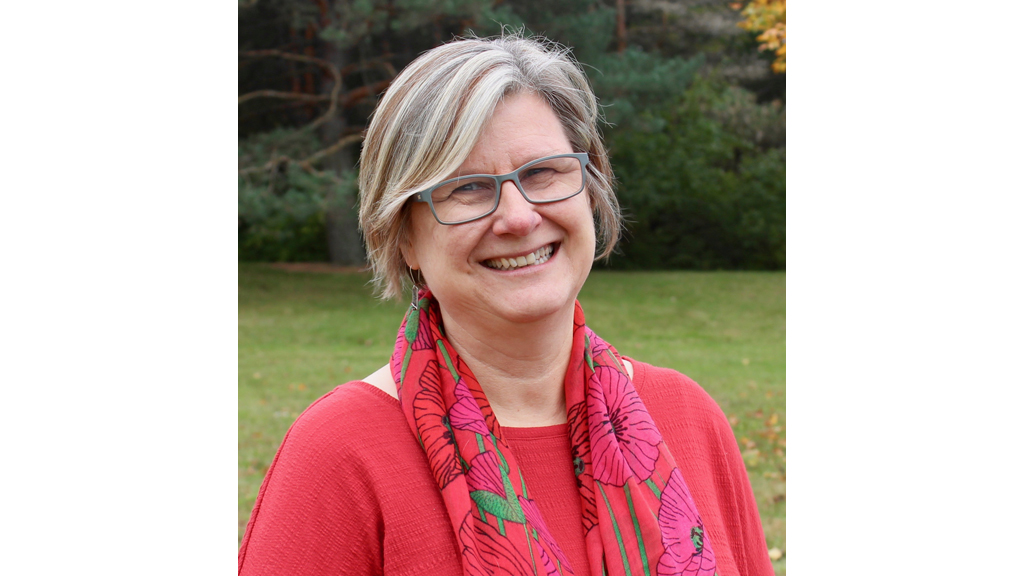
Photo credit: Washtenaw Intermediate School District
In many respects, Michigan’s Washtenaw Intermediate School District is not your typical school system. A regional service agency that serves the county where the University of Michigan is located, Washtenaw provides professional development and school improvement assistance to nine districts as well as local charter schools.
“We serve a diverse set of school districts,” says Naomi Norman, who served as Washtenaw’s interim superintendent for the 2020-21 school year. “We have school districts that are very wealthy and mostly white, while others are far more diverse. We serve tiny school districts and Ann Arbor Public Schools, so our services range from an 800-student district in a rural farming community to an urban district of 18,000.”
Almost a decade ago, the district turned its attention to equity, inclusion, and social justice. That led to the formation of the Justice Leaders Collaborative, a group of educators and nonprofit and church leaders who provide training statewide on bias, diversity, equity, race, and the long-term effect of poverty on generations of students.
In separate conversations, I interviewed Norman and researcher Shayla Griffin, one of the collaborative’s co-founders. What they had to say about their work was so thoughtful that I decided to turn it into two columns. This first one looks at Washtenaw’s work from Norman’s perspective.
What do we need to learn?
Norman’s work with Washtenaw stretches back almost two decades. She has been the director of instruction, as well as the head of assessment, planning, and research. Before she became interim superintendent in July 2020, she was an assistant superintendent who focused on equity, teacher leadership and school partnerships.
“When we talk about equity, we have this larger community that is very diverse yet we’re very segregated,” Norman says. “We see some of the same patterns you see all over the country in terms of what student outcomes look like, especially around achievement gaps. It became really important to us to say, ‘OK, we have to name this. We must talk about and engage in all these inequities.’”
When the Justice Leaders Collaborative formed, Norman says district leaders started focusing on how poverty affects students based on gender, ability, disability, and race.
“What’s important is that we started asking the questions: ‘What do we need to learn?’ ‘How do you understand and deepen your knowledge about issues of equity that impact schooling?’ ‘How do you make changes in your practice?’” Norman says. “That’s where having a group of colleagues who were also learning in the same space was so powerful. We knew we had to build a community. It was not about individuals getting better but a community working together that was passionate about creating equitable learning systems.”
Over time, Washtenaw districts started putting equity teams in place. Additional training was provided on instructional practices and hiring and evaluating teachers. Washtenaw’s school board also adopted an equity policy that explicitly focuses on “kids of color, kids in poverty, and kids with disabilities,” Norman says. District leaders use that lens for their decisions.
“In addition to long-range planning, which we do every 10 years, we also do yearly goals,” she says. “And we’re very ambitious in those yearly goals. We don’t back away from the notion that we must disrupt systemic racism, and we get evaluated on that.”
Communicate commitment
Like other school leaders I’ve talked to over the past year about equity work, Norman says districts must make a long-term commitment to it. And you must communicate your commitment.
“You have to make a 10-year commitment, because this gets hard,” she says. “There are years where you feel like you’re not making any progress. Early on, we had a hard time filling our training sessions, but we decided it was worth it to offer sessions to fewer numbers of people. And doing the work is what carries you through when you have a conflict, or you get push back from teachers or community members.”
Over the past decade, Norman estimates 500 to 600 teachers have received training from Justice Leaders Collaborative members. As the district hires a new superintendent and starts work on another 10-year long-range plan, she says there’s “no question that we will continue this focus on equity and having just education systems where all, and I mean each and every all, students are supported.”
The questions, she says, are, “How do we deepen this work? How do we start to name inequities even more explicitly and challenge ourselves to take it to the next level?”
“Every single day, I ask myself, ‘Is there something else I can do to make this a more just system? Is there anything I can do to learn more about that I can show our staff and move our system forward?”
One example came from the pandemic. Several of Washtenaw’s districts have 1:1 programs, but COVID-19 “made it quickly apparent who didn’t have that same access,” Norman says. Every student in the county had a laptop within four weeks, thanks in part to the “equity for all” promise.
“I would have said before the pandemic that this was not possible, but we pulled money from many different sources and made it happen,” she says. “It showed me the things I used to think were impossible can now be seen as possible. That’s an important awareness when you’re thinking about equity work. People are often too quick to satisfy themselves with small steps instead of going and doing the things that provide access and opportunity to all kids.”

Share this content